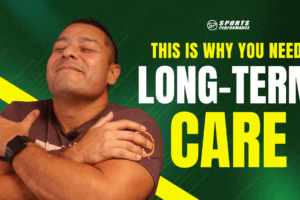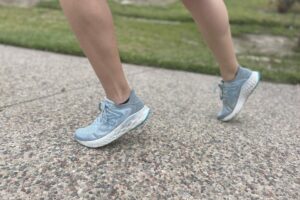Back pain is one of the most common and frustrating issues people deal with—yet the truth is, most people are not getting the full story. If you’ve ever been told to “just rest,” “take some pills,” or “wait it out,” this blog will challenge those outdated approaches and give you insight into what actually works.
At Sports Performance Physical Therapy, Dr. Chris Garcia explains why conventional advice falls short—and what you can do instead to finally get relief.
1. The Truth About Back Pain
Back pain rarely happens for just one reason. While you may blame it on sleeping funny or lifting something awkwardly, the reality is that most back pain stems from a combination of poor posture, weak stabilizing muscles, and bad movement habits that build up over time.
Unfortunately, traditional medical approaches often miss these root causes.
2. Why Rest and Painkillers Aren’t the Answer
Too often, people are told to rest or take medications to manage their symptoms. But rest alone doesn’t correct muscle imbalances or poor movement patterns—and painkillers only mask the problem. Without addressing the actual source of your pain, it’s bound to come back.
3. The Power of Active Treatment
True relief comes from active solutions. That means targeted exercises, guided movement strategies, and hands-on therapy that actually restore proper function. A skilled physical therapist will not only treat your symptoms—they’ll address why the pain started in the first place.
4. Inactivity Makes It Worse
Avoiding movement might feel better short-term, but prolonged inactivity leads to stiffness, muscle atrophy, and more pain. The key is knowing what kind of movement is safe and effective—and gradually reintroducing it under professional guidance.
5. One Size Doesn’t Fit All
Everyone’s back pain is different. That’s why cookie-cutter advice doesn’t work. A personalized assessment and treatment plan ensures you’re doing the right exercises and progressing at the right pace for your body and goals.
6. Stop Chasing Temporary Fixes
Massage, chiropractic adjustments, and even acupuncture may provide short-term relief—but without a long-term plan, the pain keeps returning. These tools can be helpful, but they must be part of a bigger strategy that includes strength, mobility, and posture correction.
7. Take Control of Your Recovery
Here’s what you should do:
Limit sitting and stay active with pain-free movementsyour needs, answer your questions, and help you determine the best path forward. Don’t let insurance dictate your health—choose a provider who puts you first.rovide personalized care and guidance to help you succeed.
Get assessed by a qualified physical therapist
Start a structured program tailored to your specific needs
Stay consistent with your therapy and home exercises
As always, we hope this helps! For any questions and all suggestions, please email us at TeamSP@SportsPerformancePT.com
If you want to know more information about how we can help, get started with a FREE discovery phone call.
Click the following link -> DISCOVERY PHONE CALL.
If you’re interested in doing Physical Therapy at Sports Performance -> CLICK HERE TO LEARN MORE & INQUIRE
If you would like to see more from us at Sports Performance… Watch our Podcast episode 141 about How to Improve your Long Term Health and Wellness -> CLICK HERE
– Dr. Chris

STAY CONNECTED
Instagram: CLICK HERE
Facebook: CLICK HERE
YouTube: CLICK HERE
Podcast: CLICK HERE
TUNE IN TO OUR PODCAST













